NORTH WALES COAST RAILWAY:NOTICE BOARD
Rheilffordd arfordir gogledd Cymru: Hysbysfwrdd
24 August 2020





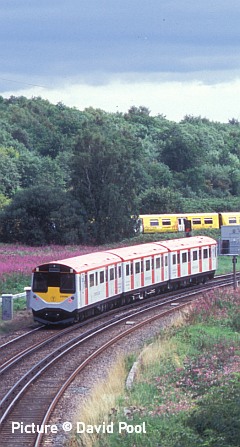
Forthcoming events
(see also our Calendar page for venues)
Note: we have removed all entries relating to meetings as the events are cancelled.
The Clwyd Railway Circle has informed us that all their dates for the 2020=21 season, previously listed here, have now been suspended.
September 2020
Saturday 5 September Steam at Chester 'The Cheshireman' (Railway Touring Company). Norwich to Chester. Loco 6233 for part of the journey.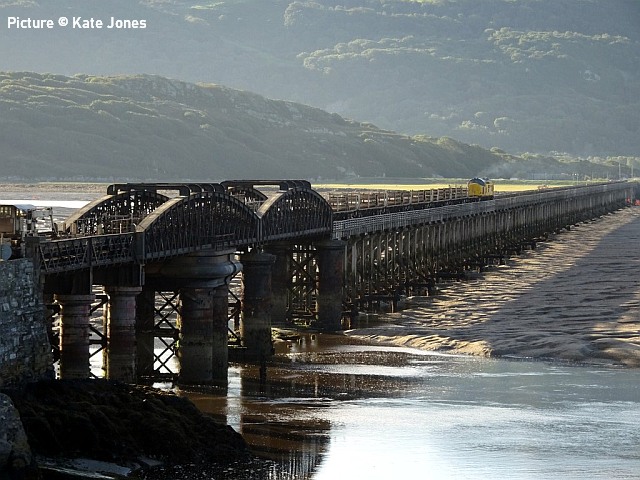
A train of long-welded rail carriers, top-and-tailed by 97 304 and 97 302, makes its way across Barmouth viaduct on 24 August. Picture by Kate Jones.
Borderlands scenes, 17 August - by Tim Rogers
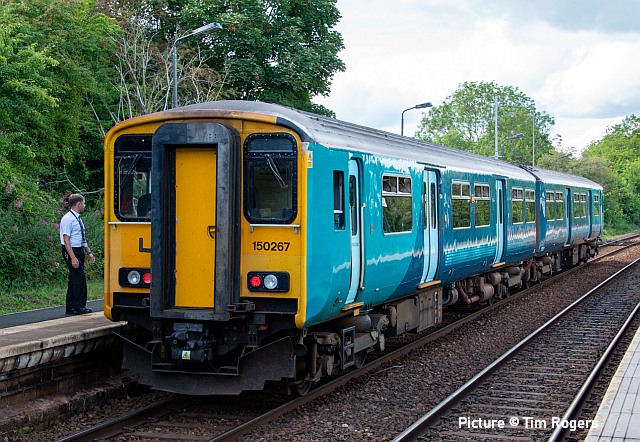
150 267 calls at Caergwrle with train 2F70 16:32 Wrexham General to Bidston.

66 768 passes Caergwrle with 6M42 09:06 Avonmouth Hanson Sdg GBrF to Penyffordd Cement empties.
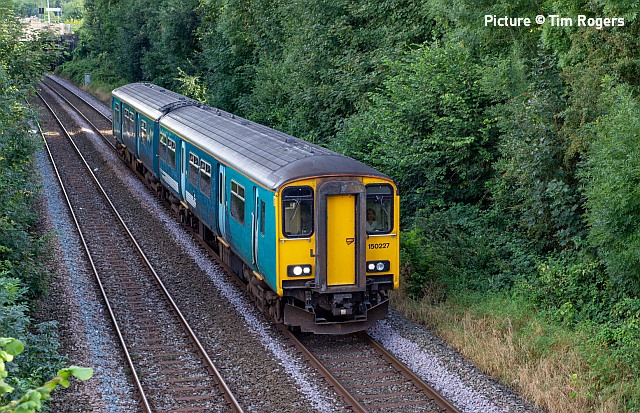
At Gwersyllt, 150 227 is 2J69 16:35 Bidston to Wrexham General.
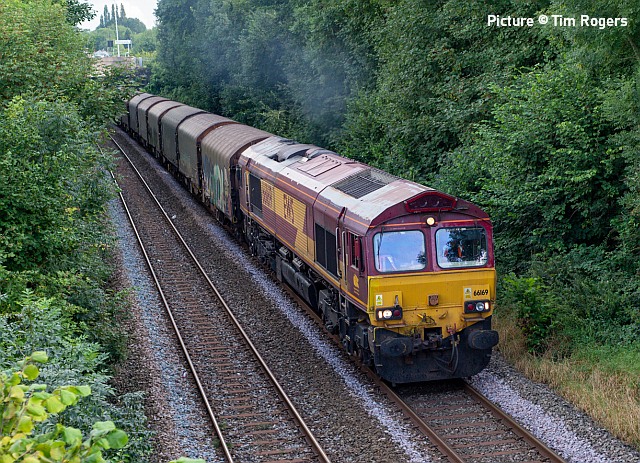
66 169 with 6M86 10:27 Margam T.C. to Dee Marsh Reception sidiings. Loaded steel for coating.
Looking back: Runcorn - with David Pool
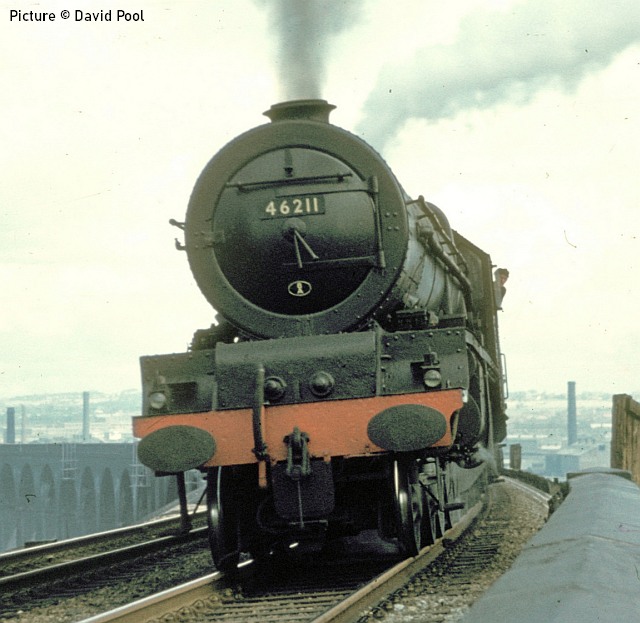
Not quite in Runcorn yet, but 46211 Queen Maud is about to cross the Runcorn Bridge on 9 July 1960, having climbed the viaduct from Ditton. The footpath alongside was still open, as was the Transporter Bridge, and provided some stunning shots, although at the time I was less keen on head-on views which did not show the train. 46211 was working the 09:50 LIverpool Lime Street to Euston (Saturdays only), and would be stopping at Runcorn. I have seen it stated that this was a Crewe North locomotive in 1960, but it clearly shows an 8A Edge Hill shedplate. It was withdrawn the following year.
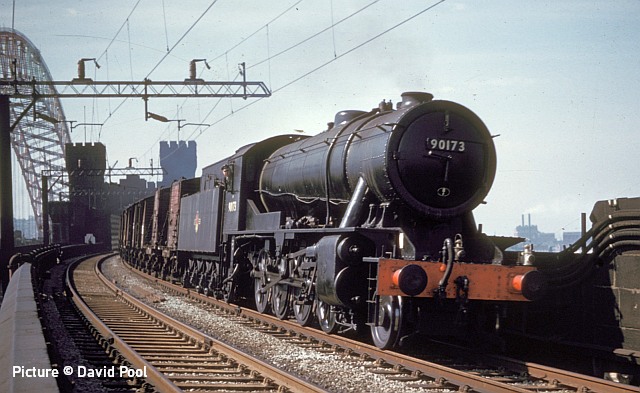
On 13 May 1961 a visit to the Runcorn Bridge (sometimes referred to as the Ethelfleda or Britannia Bridge) showed the new road bridge nearing completion. An astonishingly clean “Austerity” 90173 with an 8F Springs Branch shedplate is probably heading for Liverpool docks. The footpath toll was abolished in 1963 when the new road bridge opened and the Transporter was dismantled, but the footpath was eventually closed in 1965 after some antisocial behaviour problems.
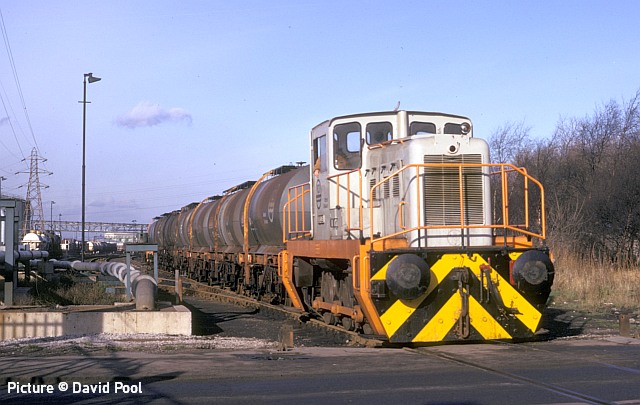
The exchange sidings at Weston Point were always busy, and on 22 January 1973 a train of empty caustic soda tanks is about to cross Sandy Lane on its way to ICI’s Castner Kellner Works. The “Janus” class locomotive Eskdale, Yorkshire Engine Co. 2718 built in 1958, was one of several coming from the Agricultural Division of ICI Billingham to replace the smaller Yorkshire 0-4-0 diesels CK1 to CK5. It has here been rebranded as a Mond Division locomotive.
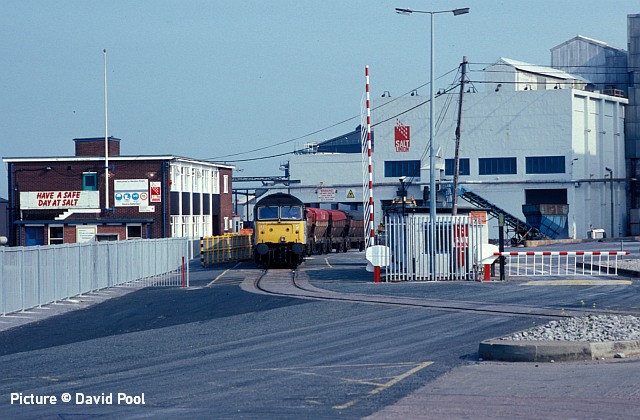
Weston Point was also the source of traffic from the ICI Salt Works, which became Salt Union and more recently Ineos. On 23 May 1992 47 317 is about to leave the Works with a rake of salt wagons. Unlike the arrangements at ICI Castner Kellner and Rocksavage Works, BR locomotives were now permitted to enter Salt Union Works to pick up wagons.
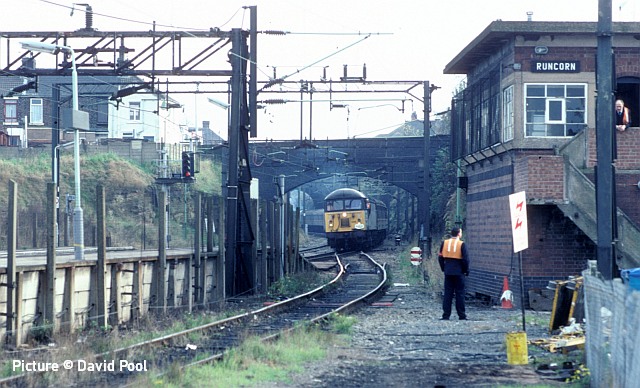
The Folly Lane branch between Runcorn Station and Weston Point was not an easy branch to photograph, being mostly on an inaccessible embankment with overhead electrification. On 31 October 1993 Pathfinder Tours ran “The Merseyman” Railtour from Bristol, visiting Manchester, Runcorn and Liverpool. The Holloway car park at Runcorn Station gave the best photographic opportunities when the Railtour visited the branch. 56 096 is coming off the main line at Runcorn Station.
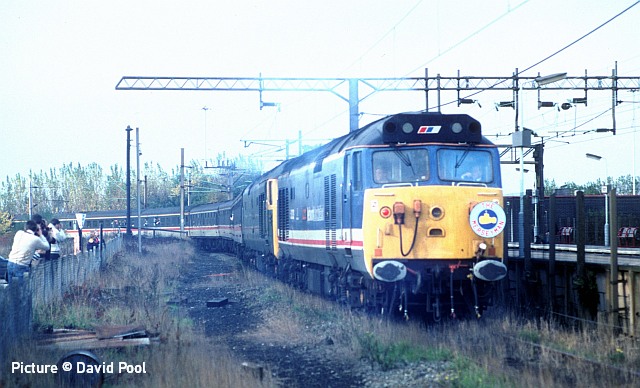
At the other end of the Railtour train were a pair of 50s, 50 033 Glorious in Network South East livery and the green 50 007 Sir Edward Elgar . The train has climbed up the gradient from Weston Point, and the blue haze in the image is the product of 50 033 and not due to the film processing!
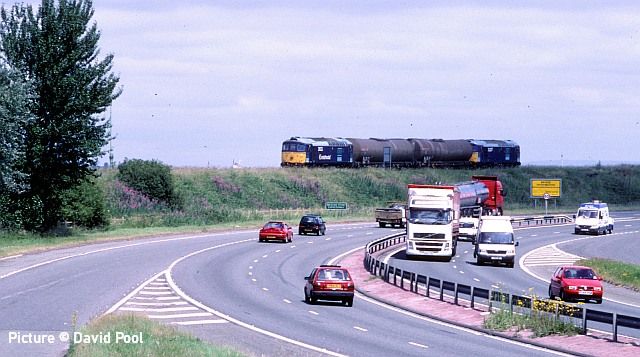
In one of the earlier “Looking Back” pieces, I showed two DRS class 33s at Winwick with 'Minimodal' branding, travelling from Sellafield to Weston Point. I wanted to photograph one of these trains on the branch, and eventually I decided that a shot from near a slip road on the Expressway was the safest option! On 24 June 2003 33025 was again working the train, but this time partnered with the slim bodied 33 207 (Hastings gauge). A long telephoto was used, and somehow I found a gap between the lorries to get an acceptable shot.
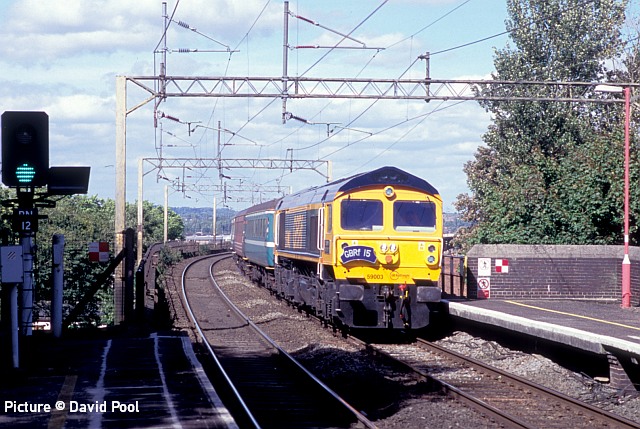
In 2016 the GBRf four day Railtour event featured 59 003 in the Liverpool area. I had not managed to see it on the Drax trains, so when it was allocated to the Lime Street to Doncaster leg of the tour it provided the best opportunity for me. 1Z16 was the 13:50 from Lime Street on 11 September 2016, and 59 003 is entering Runcorn Station. The green indication on the signal was for a unit in the station about to depart, but fortunately I was lucky, unlike several photographers who were further down the platform!
A leafy diversion - images by Greg Mape
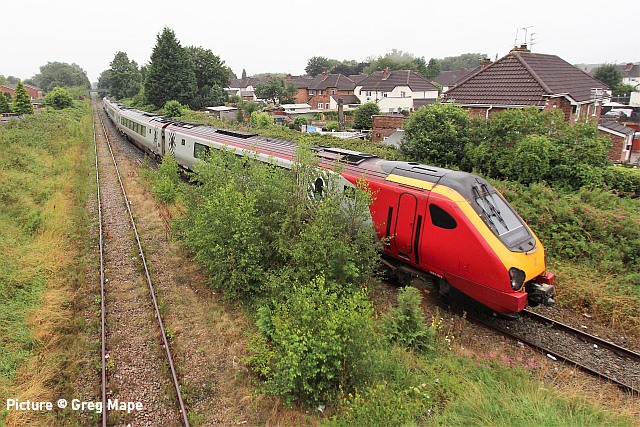
During an engineering blockade on the main line, diverted Avanti West Coast 221 102 negotiates Northwich West Junction having taken the 'Cheshire Lines' route from Chester
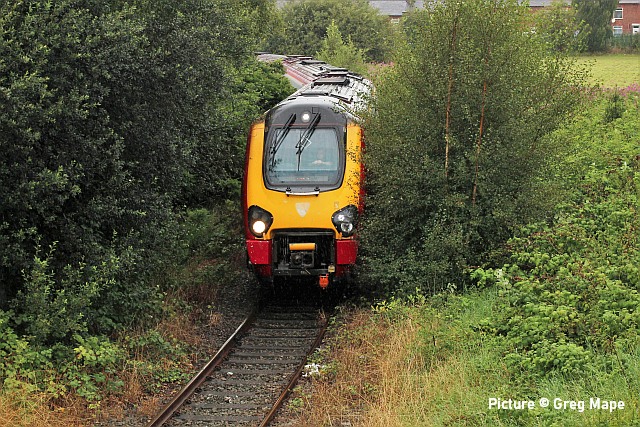
Scraping round the sharp curve ...
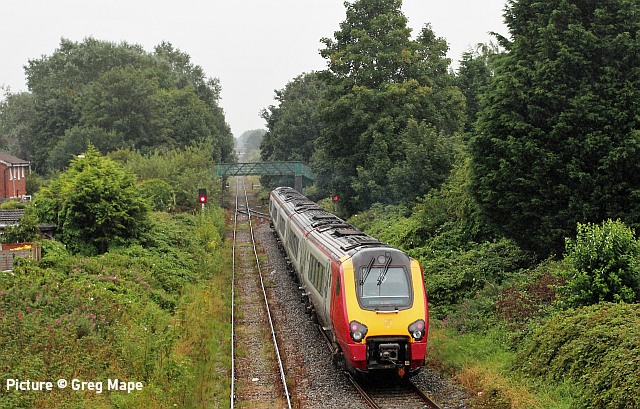
... and reaching Northwich South Junction where it will join the route to Crewe via Sandbach.
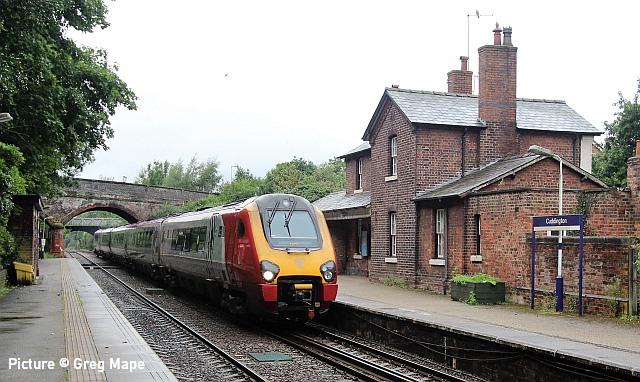
The 13:53 Holyhead - Crewe makes an unusual sight at Cuddington.
Corwen Progress - report by Peter Neve
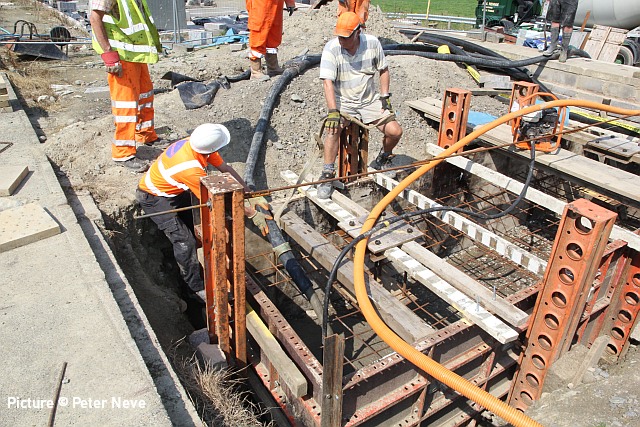
Some photographs of the latest Llangollen Railway development at Corwen – the erection of the last pair of ex-Blackfriars station canopy support columns. Concrete is pumped into the shuttering on 12 August to form the foundation for the pair of columns. The shuttering was constructed entirely by the volunteer workforce.
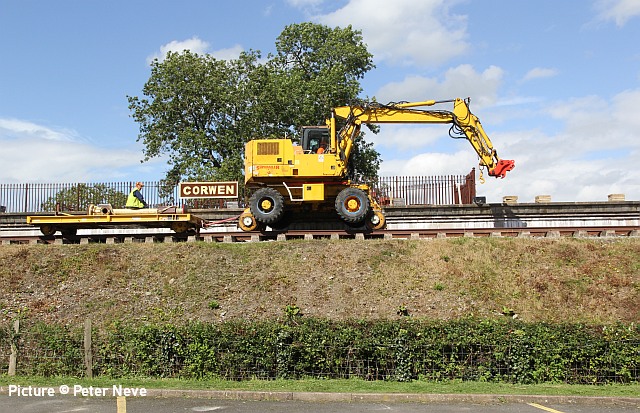
One of the columns is transported to site on 20 August using the Road/Rail vehicle (RRV) as traction.
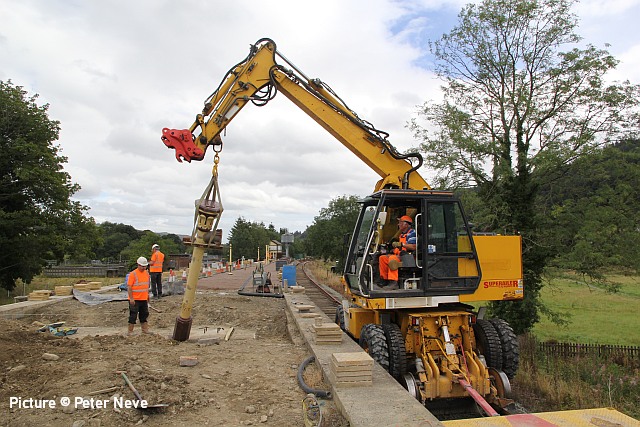
The RRV is used to lower the column into position before being bolted down to the concrete foundation block.
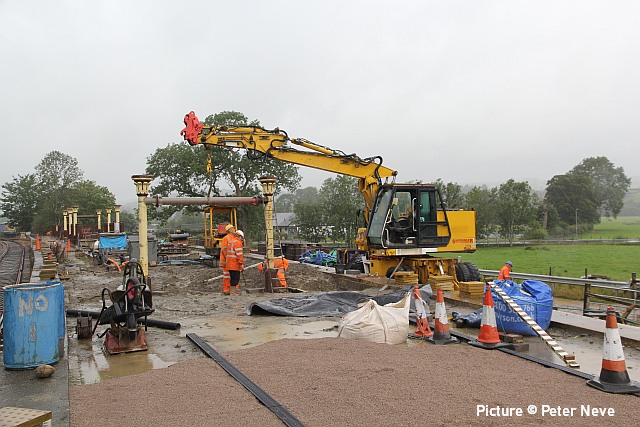
On a very wet and blustery Saturday morning 22 August the steel crossmember is bolted into position. The gap between the first and second pair of columns will be filled with an on-platform station building, suitably reinforced and engineered to support the canopy.
Nights on the milling train - by driver Jim Scott
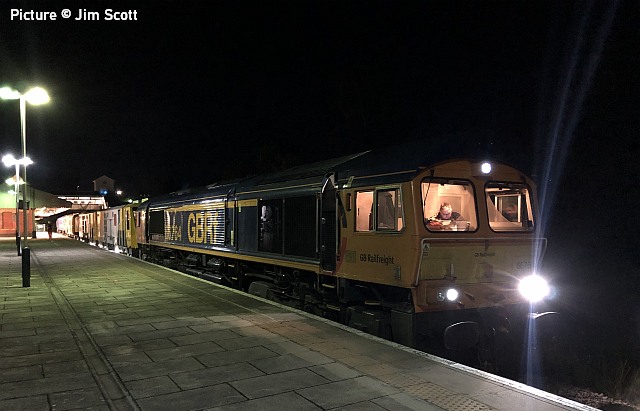
The nights of 18-20 August saw me on the rail milling machine working between Wexham and Buckley. The machine is pulled to site by the locos, 66 764 and maritime liveried 66 727 Maritime One this time, where it is uncoupled and gets to work milling the rail; it’s different to a grinder as it produces swarf which is collected within the machine and removed when the train returns to Craven Arms (the nearest location the swarf truck can pull alongside the unit). Above, the first night at Wrexham
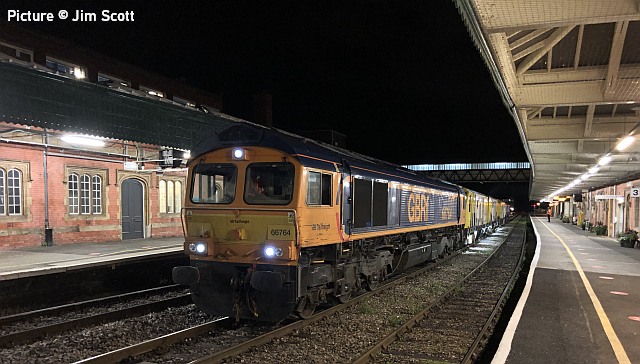
The night in Shrewsbury...
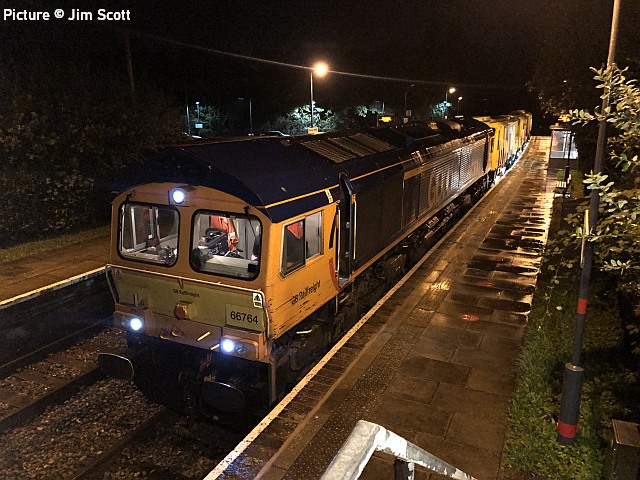
... and onward to Penyffordd....
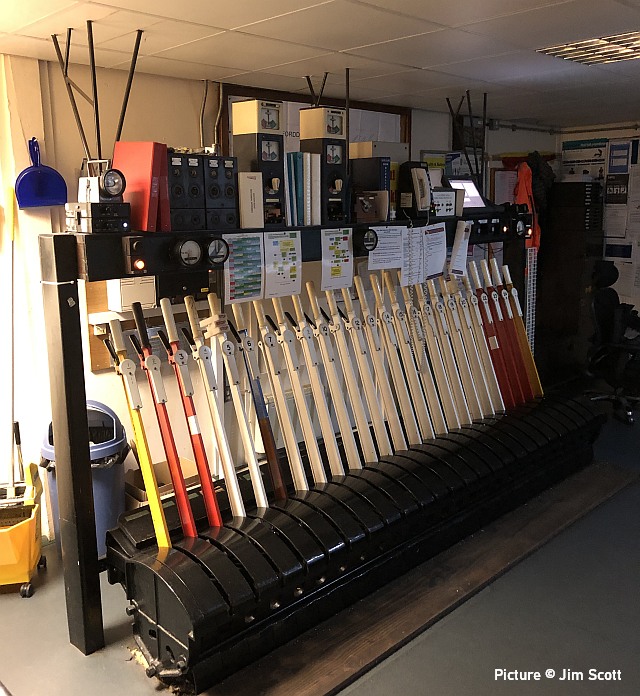
... reporting to the signalbox, where the frame has lots of white (unused) levers now, with no junction to Mold and crossovers removed.
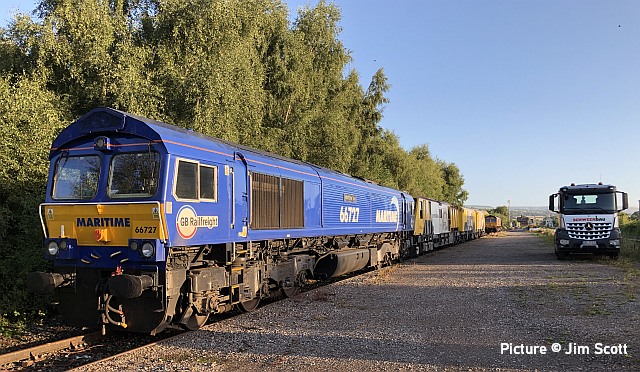
Back at Craven Arms the following morning.
Speeding up the service
UK Government Transport Secretary Grant Shapps has announced £343m of extra infrastructure investment to help deliver better journeys for passengers in Wales. North Wales will, it seems, get £2m for the next phase of development work on proposals to speed up journeys between Llandudno Junction and Chester. This is, according to press reports, for 'better aligned tracks and exploring putting additional services on the line'.
The DfT announcement in full is on the Government website, but it's not entirely clear what's meant. Surely suitable schemes already exist. So, readers, what would you do to speed up services between The Junction and Chester short of electrification or reducing the service at some stations? Remove some foot crossings which have speed restrictions, perhaps. Or serve stations at the east end of the line with an 'metro' service turning back at Flint?
From Dave Sallery's archive

Ballast traffic old-style: 37 026 Seafire passes Mostyn on 23 June 1994. By that date the bogie hoppers had replaces the earlier four-wheeled version.
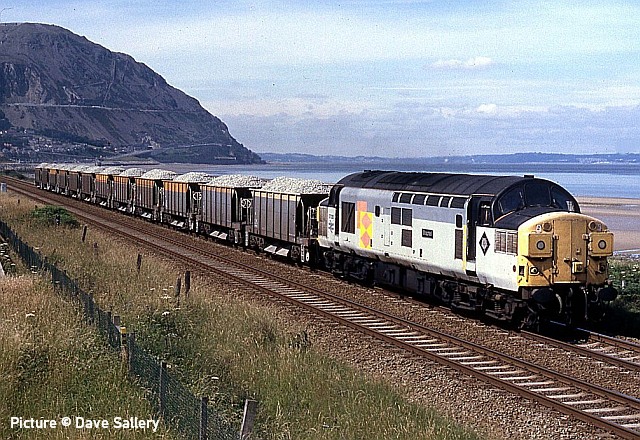
14 July 1994, and 37 026 again, soon after leavindg Penmaenmawr quarry. The loco wears the 'Speedlink' version of the Railfreight livery; the Speedlink wagonload network irself had been abolished in 1991.
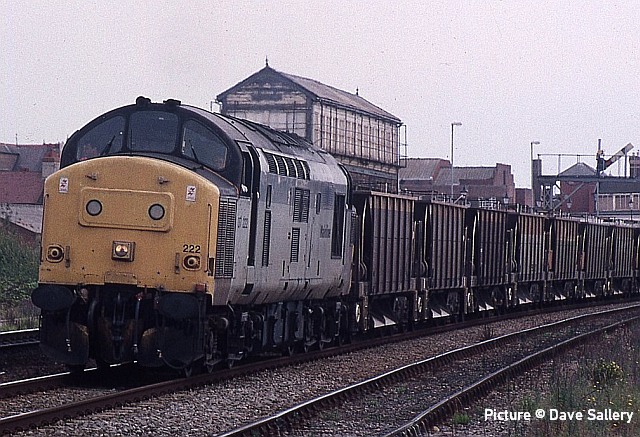
18 August 1997, and 37 222 - branded for the short-lived Mainline Freight company - passes closed Rhyl No2 signalbox with empty hoppers.
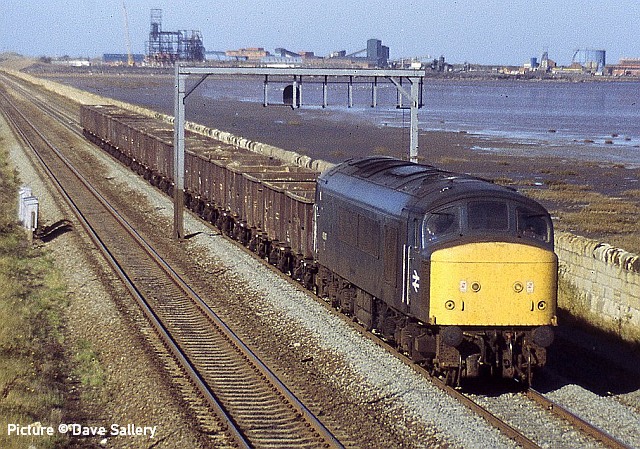
Removal of spoil is a vital part of tracklaying. 45 007 's train at Mostyn on 15 October 1986 comprised redundant 16-ton mineral wagons which have had slots cut in the sides to prevent the severe overloading of the wagon which would occur if the wagon was filled with heavy material including crushed stone and (probably damp) soil.
D-train views - by David Pool
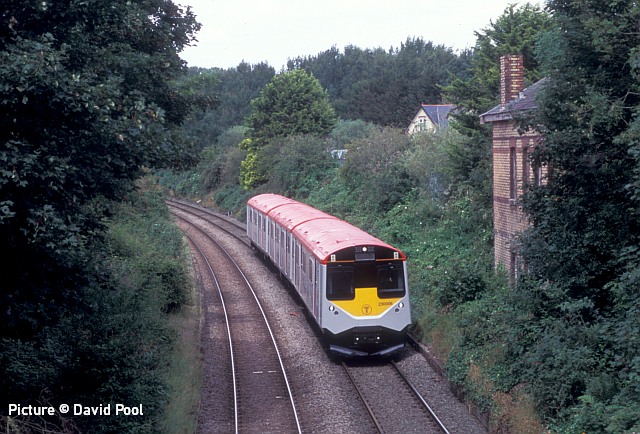
It is difficult to photograph a train passing the Burton Point Station building, since the tall trees cast shadows for most of the day. The best time is early afternoon, so when 230 006 was leaving Bidston at 14:02 on 29 July 2020 this gave me the opportunity for a nice shot.
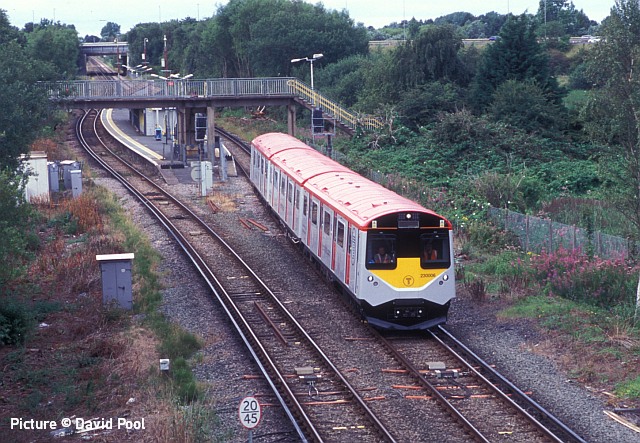
The trains from Wrexham normally arrive at Platform 2 at Bidston to reverse, but generally use Platform 1 if they are continuing towards Birkenhead North. 230 006 has had several paths to Birkenhead North E.M.U. Depot, but often they have been cancelled and the unit has returned to the bay platform at Wrexham. On 7 August it did contimue to Birkenhead, and it has just left Platform 1 at Bidston.
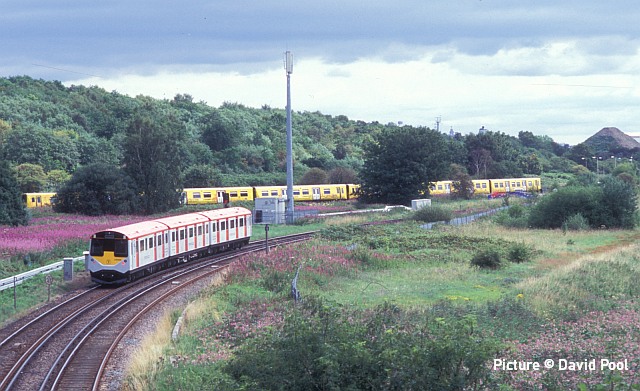
In order to reach the Depot at Birkenhead North, 230 006 has to cross the line going to New Brighton. A Merseyrail 6-car unit from New Brighton (the extra 3 cars being due to the Covid timetable) has priority over the Class 230, which is being held at Bidston East Junction.
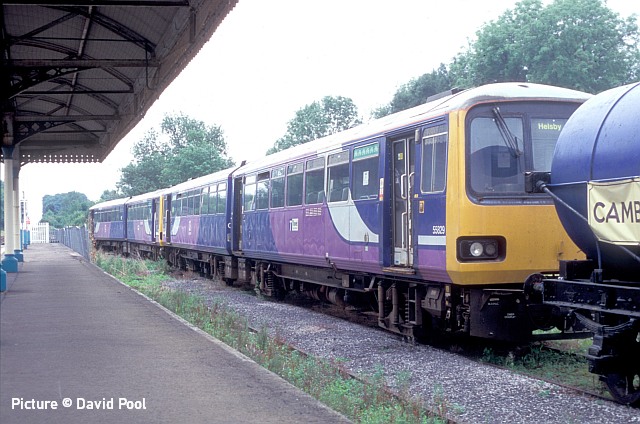
The two Class 144 units acquired by the Cambrian Heritage Railways are now parked in a siding at Gobowen station. 144 006 is showing "Helsby" on the destination blind. Much as it would be appreciated if it were possible to provide a rail service to Oswestry, the difficulty of crossing the A5 seems unlikely to be resolved in the near future.
The Clock Face route
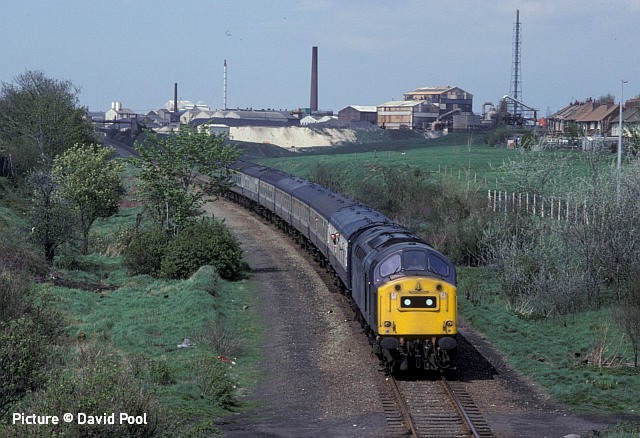
Rail operators sometimes talk of 'clock face timetables' when discussing train services that depart at the same time each hour, but once there was a station called Clock Face, serving a village of that name near St Helens whose inn happened to have a clock face on its frontage; the local colliery also adopted the name. The station opened in 1856, on a line which ran from St Helens Shaw Street (now known as St Helens Central) to Ditton Junction, serving Widnes South station (closed 1962). The passenger service closed in 1951, but the line remained for freight and diversions. It was cut back to Sutton Manor colliery in 1981, and closed completely in 1987.
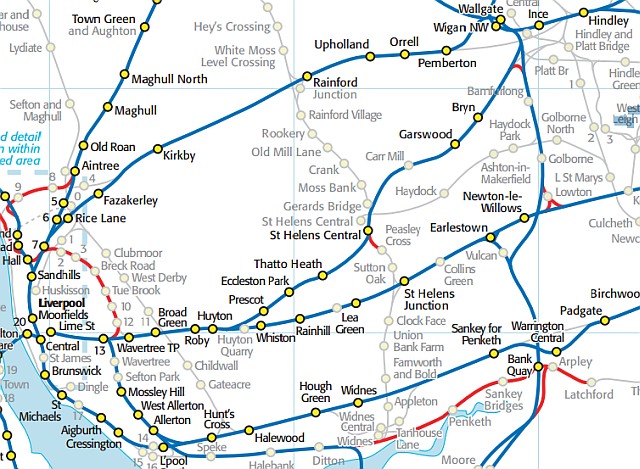
We mention this as one of David Pool's images in the last issue (repeated above) shows a diverted train passing that way during engineering works on its normal route in 1979, and David asked what the route would be. Several readers (our thanks to them all) agree that the route used was, as can be traced on the map above. A Liverpool Lime Street to ManchesterVictoria train would turn south at Edge Hill to reach Ditton Junction, then north on the 'Clock Face' route St Helens Shaw Street/Central, continuing to Ince Moss Junction, south of Wigan where a 'chord' connects to Bamfurlong Junction on the southbound West Coast Main Line. The train would head south to as far as the junctions at Parkside where it could resume its normal route eastward to Manchester, not having reversed at any point.
Bus replacements were avoided wherever possible in those days, but you might ask why the trains didn't use the 'CLC' line via Warrington Central. Maybe that was closed as well, although there is no direct connection from that line to Manchester Victoria.
Our thanks to the Disused Stations website, and to Richard Fairhurst for permission to extract from his superb Adlestrop Railway Atlas.
North Wales Coast home page | Archive | Previous Notice Board